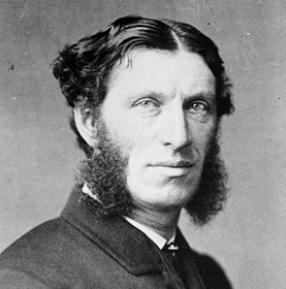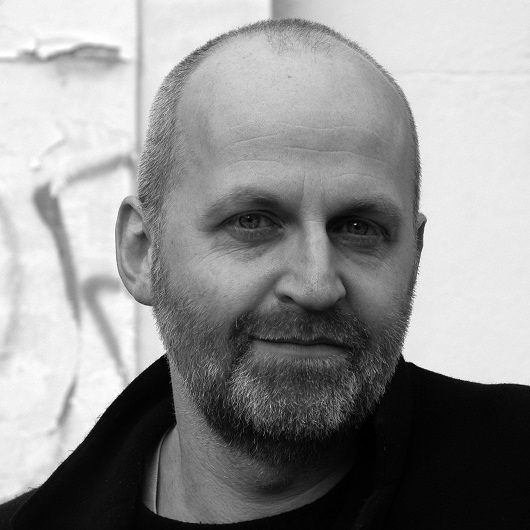Colourful Reality
From Londonhua WIKI
Revision as of 13:34, 14 June 2017 by Akgiacoman (talk | contribs)
Contents
Colourful Reality
by akgiacoman
 Your Project Page Picture Caption |
Abstract
"A London Full of Colour" is a project that aims to portray a different reality of the daily life of London citizens. By picturing different scenarios in their reality comparing them to the reality that I choose for each one of them, the audience will be able to admire the beauty and uniqueness of the city from a different perspective. I have gone to international poetry competitions and taken painting and photography courses before arriving to college. This project will combine my favorite forms of expression through art and hopefully brighten the days of the viewers. The main message I wish to convey is that every single one of us chooses the reality they want to live in, meaning that the same place could be seen as a prison for our souls or a wonderland for our imagination. The goal of this Milestone, however, is to connect the emotions displayed in the pictures and the colors of the paintings in a creative way empathizing with the people walking by the site as a daily routine. Each one of the sets of paintings and pictures will be accompanied by a short story, poem or reflection.
Introduction
It is in the beauty of a great writing where a person's real emotions are free to be exposed. And what makes a great writing so great? I would say that the ability of a writer to appeal to the readers' emotions precisely. In writing there is no such thing as truth, each writer is free to create their own reality as dark or as colorful a they wish to do so. Though it is true life experiences and situations shape a person's way of viewing life, each individual has the power to define his or her own reality and a way to do so is through literature. In this Milestone, the work of different poets is presented, as well as information about the writer's background and the path that lead to their accomplishments. The writers are chosen for their relevance as well as for the topics they cover in their poems, related to people's emotions, to symbolism and to weather. Poetry has been a tool for many of these writers to use not only as a form of expression through art but also to raise awareness about their concerns. Poetry is for everyone and its power is beyond most people's imaginations, which is why, in the deliverable, poems of my own will accompany each set of picture and painting done in the Milestones Colourless London and Adding Pigment that will encompass the same topics covered by the poets in the background.
Section 1: Background
Mathew Arnold
 |
Matthew Arnold was born on December 24, 1822 in Laleham, Middlesex, England, died on April 15, 1888 in Liverpool and was buried at All Saints church, Laleham with his young children. He was an English Victorian poet and literary and social critic, noted especially for his classical attacks on the contemporary tastes and manners of the “Barbarians” (the aristocracy), the “Philistines” (the commercial middle class), and the “Populace.” [1] Arnold’s classification of English society into Barbarians (with their high spirit, serenity, and distinguished manners and their inaccessibility to ideas), Philistines (the stronghold of religious nonconformity, with plenty of energy and morality but insufficient “sweetness and light”), and Populace (still raw and blind) is well known. Arnold saw in the Philistines the key to the whole position; they were now the most influential section of society; their strength was the nation’s strength, their crudeness its crudeness: Educate and humanize the Philistines, therefore. Arnold saw in the idea of “the State,” and not in any one class of society, the true organ and repository of the nation’s collective “best self.” [2] The way he sympathizes with the people and their socioeconomic situation is best expressed through his poetry, and more specifically in the poem "West London", analyzed at the bottom of this section.
Mr. Arnold began his career as a poet, winning early recognition as a student at the Rugby School where his father, Thomas Arnold, had earned national acclaim as a strict and innovative headmaster. Arnold also studied at Balliol College, Oxford University. In 1844, after completing his undergraduate degree at Oxford, he returned to Rugby as a teacher of classics. [3] Only a quarter of his productive life was given to writing poetry, but many of the same values, attitudes, and feelings that are expressed in his poems achieve a fuller or more balanced formulation in his prose.[4] Through his writing he fulfilled his self-imposed task of enlightening the social consciousness of England as he called for a new epic poetry: "a poetry that would address the moral needs of his readers, to animate and ennoble them”. Arnold’s arguments, for a renewed religious faith and an adoption of classical aesthetics and morals, are particularly representative of mainstream Victorian intellectual concerns. His approach to these issues, however, established criticism as an art form, and has influenced almost every major English critic since. [5] He was a man of great character and strong moral values that he worked to promote to his readers. In the first publication of poems under his own name in 1853, he included an extensive preface explaining why he had left out his famous piece "Empedocles". He claimed that it was a dramatic poem “in which the suffering finds no vent in action,” in which there is “everything to be endured, nothing to be done.” This preface foreshadows his later criticism in its insistence upon the classic virtues of unity, impersonality, universality, and architectonic power and upon the value of the classical masterpieces as models for “an age of spiritual discomfort”—an age “wanting in moral grandeur.” [6]
In 1857, assisted by the vote of his godfather (and predecessor) John Keble, Arnold was elected to the Oxford chair of poetry, which he held for 10 years. It was characteristic of him that he revolutionized this professorship. The keynote was struck in his inaugural lecture: “On the Modern Element in Literature,” “modern” being taken to mean not merely “contemporary” (for Greece was “modern”), but the spirit that, contemplating the vast and complex spectacle of life, craves for moral and intellectual “deliverance.” For his many apportions Mr. Arnold has been considered one of the most influential writers of his time and he is the only person to have two memorials in Westminster Abbey.[7] A bust by Alfred Bruce-Joy was unveiled by Lord Coleridge on 31 October 1891 in the south west tower chapel, where his father's bust was also placed. His name is inscribed on the bust. It was moved to its present position on the window ledge in Poets' Corner in 1967. The second memorial was unveiled on 28 February 1989 and consists of a mural tablet of Lepine limestone and green Westmorland slate with a motif of gilded flames, designed by Donald Buttress. The reason for the second memorial was possibly that the bust was not easy to see. The inscription reads: "Remember Matthew Arnold 1822-1888 Poet and Critic. Let but the light appear and thy transfigured walls be touch'd with flame". The quotation is taken from Arnold's memorial poem to A.P.Stanley, Dean of Westminster. [8]
West London
Crouch'd on the pavement close by Belgrave Square
A tramp I saw, ill, moody, and tongue-tied;
A babe was in her arms, and at her side
A girl; their clothes were rags, their feet were bare.
Some labouring men, whose work lay somewhere there,
Pass'd opposite; she touch'd her girl, who hied
Across, and begg'd and came back satisfied.
The rich she had let pass with frozen stare.
Thought I: Above her state this spirit towers;
She will not ask of aliens, but of friends,
Of sharers in a common human fate.
She turns from that cold succour, which attneds
The unknown little from the unknowing great,
And points us to a better time than ours.
Interpretation
The speaker of the poem sits in Belgrave Square and looks at a poor tramp loitering with her baby and young daughter, all dressed in rags. Then, as some men from the working class pass by, the tramp sends the little girl to beg and she successfully brings back some money. However, as rich men pass by they make no effort to beg. Then the speaker explains how he realizes that the tramp will only beg from the working class who will understand and sympathize with her situation and the rich are "aliens" that would show no empathy for her plight. In this short poem, Matthew Arnold criticizes society's lack of response to poverty. He lived in a period of modernization and was able to see the gap between social classes broaden as people became "aliens" for each other and all the empathic community that once existed was deteriorating. It is also important to note the way he writes his sentences emphasizing the social class as the subject in lines such as "A tramp I saw" and "The rich she had let pass" putting "The tramp" and "The rich" as subjects. In the same way, the title "West London" accentuates this idea for that is considered to be a very wealthy side of the city. He uses this fact to accentuate the fact that poverty remains present despite the wealth of high class neighborhoods like West London. Finally, by the end of the poem, he leaves the readers with his desire for a change and an attempt of a wake up call. As he refers to the poor girl as the "unknown little" and to the rich as the "unknowing great" he shows how unconscious people have become and how he hopes for a better future.
Andre Breton
 |
Five ways to kill a man
Richard Aldington
 |
Childhood III
Don Patterson
 |
Rain
Harry Baker
 |
paper people
Brenda Shaughnessy
 |
Project for a Fainting
Section 2: Deliverable
In this section, provide your contribution, creative element, assessment, or observation with regard to your background research. This could be a new derivative work based on previous research, or some parallel to other events. In this section, describe the relationship between your background review and your deliverable; make the connection between the two clear.
Subsection 1
...use as many subsections or main sections as you need to support the claims for why what you did related to your Background section...
Subsection 2
...and so on and so forth...
Gallery
Conclusion
In this section, provide a summary or recap of your work, as well as potential areas of further inquiry (for yourself, future students, or other researchers).
References
Add a references section; consult the Help page for details about inserting citations in this page.
Attribution of Work
For milestones completed collaboratively, add a section here detailing the division of labor and work completed as part of this milestone. All collaborators may link to this single milestone article instead of creating duplicate pages. This section is not necessary for milestones completed by a single individual.
External Links
If appropriate, add an external links section
Image Gallery
If appropriate, add an image gallery
- ↑ Willey, B. (2017, February 14). Matthew Arnold. Retrieved June 05, 2017, from https://www.britannica.com/biography/Matthew-Arnold
- ↑ Willey, B. (2017, February 14). Matthew Arnold. Retrieved June 14, 2017, from https://www.britannica.com/biography/Matthew-Arnold
- ↑ Matthew Arnold. (2015, October 04). Retrieved June 05, 2017, from https://www.poets.org/poetsorg/poet/matthew-arnold
- ↑ Poetry Foundation. (n.d.). Matthew Arnold. Retrieved June 14, 2017, from https://www.poetryfoundation.org/poems-and-poets/poets/detail/matthew-arnold
- ↑ Matthew Arnold. (2015, October 04). Retrieved June 05, 2017, from https://www.poets.org/poetsorg/poet/matthew-arnold
- ↑ Willey, B. (2017, February 14). Matthew Arnold. Retrieved June 14, 2017, from https://www.britannica.com/biography/Matthew-Arnold
- ↑ Willey, B. (2017, February 14). Matthew Arnold. Retrieved June 14, 2017, from https://www.britannica.com/biography/Matthew-Arnold
- ↑ Westminster Abbey. (n.d.). Thomas and Matthew Arnold. Retrieved June 05, 2017, from http://www.westminster-abbey.org/our-history/people/thomas-and-matthew-arnold


